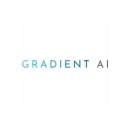For a moment, Gregory Schultz wants you to picture data like it’s Play-Doh.
That’s because, all too often, the data scientist hears the phrase, “The more data, the better.” But in his experiences at Gradient AI, he knows that statement is not accurate.
“People think a bunch of data can be smashed together and put through that little spaghetti Play-Doh crank to produce profound results,” Schultz said. “But that’s not the case.”
That’s where machine learning comes in, he said. The process involves computer algorithms that improve over time with the use of mass loads of data, but the key, Schultz explained, is fine-tuning and perfecting this process, which, going back to analogies, is more like solving a crime on a detective TV show.
“Up all night, walls full of pictures and evidence, carefully pinning strings to map one item to the next until the bigger picture emerges,” Schultz said. “It’s a challenge, but a very exciting problem.”
There are different ways to solve this mystery, so to speak. That’s why Built In Boston reached out to three local companies to figure out how they approach machine learning. At Alteryx, they use an open-source mentality. At Interactions, they use a unique approach called a human-assisted understanding (HAU) solution, which we’ll explain in more detail below.
Learn more about how these three companies use machine learning, and the impact it’s had on their businesses.
When it comes to building and powering their Analytic Process Automation platform with machine learning, Parthiv Naresh said that Alteryx always puts the customer first and considers their mindset. “This allows us to innovate on the best, most robust features while maintaining a clear and concise implementation for people of varying skill sets,” Naresh said.
What’s a surprising or interesting way your company is using machine learning?
Alteryx has taken a unique approach to machine learning with an open-source mentality. Machine learning is more than just picking a model and fine-tuning its hyperparameters. It involves understanding and manipulating data structures, feature engineering and building a modular approach so the entire process can become an integrated, reproducible part of your business. Through the development of woodwork, featuretools, compose and EvalML, Alteryx has pushed into machine learning from every angle and has taken a fresh approach to a complex field.
What impact has machine learning had on your business, product or the customer experience?
Machine learning has had a tremendous direct and indirect effect on our business, and it will continue to affect us, our customers and our products far into the future. Building our predictive tools for integration into the broader enterprise has provided our customers with a breadth of services to broaden the use cases for Alteryx products. As we continue to roll out new features such as model understanding, data preprocessing, visualizations and data health checks, we increase the number of ways that our platform can be leveraged across diverse business scopes.
There is always a story that can be told from the information we gather, and having the right tools to tell that story is what brings that data out of a vacuum. ’’
What excites you most about the work you’re doing?
Data is a currency that has appreciated in value, especially over the past two decades as the tools we’ve used to understand that data have advanced alongside our ability to collect it. There is always a story that can be told from the information we gather, and having the right tools to tell that story is what brings that data out of a vacuum.
Unfortunately, most people out there who want to understand these stories don’t know how to use the right tools. Getting to work with and build out machine learning services for consumption by an open community of aspiring and seasoned data scientists is an incredible opportunity for numerous reasons, the greatest of which is knowing that this is taking a complex subject and making it usable by the masses. Being directly involved in an initiative to bring these tools to those who can leverage them in endlessly imaginative ways is a benefit to everyone, and something I hope to do for years to come.
Schultz said that the insurance industry tends to be slow in adopting change. That’s why he loves what he does at Gradient AI, leveraging the company’s deep insurance expertise along with its predictive analytics capabilities to get their clients up to date.
What’s a surprising or interesting way your company is using machine learning?
We use the proverbial data science Swiss Army knife techniques like GBMs, random forests, neural networks and clustering to understand data and make accurate predictions for our clients. We are also actively researching ways to leverage deep learning and cutting-edge federated learning techniques to get more power out of similar, but not precisely matching, data.
What impact has machine learning had on your business, product or the customer experience?
At Gradient AI, machine learning is at the very core of our product. Historically speaking, the insurance industry has been slow to adopt change. We leverage our deep insurance expertise along with our predictive analytics capabilities to get our clients up to date with the modern, rapidly evolving state of predictive analytics and to keep them right there at the forefront.
At Gradient AI, machine learning is at the very core of our product.’’
What excites you most about the work you’re doing?
The most exciting work we’re doing is around our federated data and federated learning. We have many clients, and they all give us data that adds to our proprietary federated data set.
Traditionally, each client would build models using only their own data, but we build models training on both the client’s own data and our federated data. It’s a very interesting challenge to combine data from heterogeneous sources in itself.
Interactions uses machine learning for speech recognition and natural language understanding, which requires loads of data, Srinivas Bangalore said. That’s why the company uses a unique machine learning solution called human-assisted understanding.
What’s a surprising or interesting way your company is using machine learning?
Machine learning models for speech recognition and natural language understanding require large amounts of data that are transcribed and labeled for meaning, which is a massive investment and a large impediment to the rapid deployment of fully-automated conversational systems. However, the unique human-assisted understanding (HAU) solution that Interactions offers leverages human assistance to label the intents and entities (products and service names) in real time, when the machine learning models are not sufficiently confident.
The HAU provides labels that are in turn used to improve the machine learning models to provide increased accuracy and confidence, thus reducing the need for human assistance the next time around.
What impact has machine learning had on your business, product or the customer experience?
Machine learning has been a key technology for Interactions’ business, impacting every component of the conversational AI pipeline. The impact is twofold. It is used to improve the accuracy of speech recognition and natural language understanding components using an array of neural network architectures. It’s also used to assign a confidence score to the predictions output by natural language understanding.
Working with cross-functional teams in the business to articulate real-world business challenges as technical problems is a thrill.’’
The confidence scores are used to decide the need for human assistance in interpreting a user’s utterance. With advanced machine learning modeling techniques, the confidence score estimation is sharpened to balance accuracy of the prediction against the need for human assistance. By minimizing the need for human assistance, Interactions realizes a significant cost savings, without compromising our user experience.
What excites you most about the work you’re doing?
As the director of AI technologies, I have the privilege of leading a team of researchers in all components of the conversational AI pipeline. Personally, working with cross-functional teams in the business to articulate real-world business challenges as technical problems is a thrill. I love leading my team to investigate a range of solutions to those problems, engineering solutions that fit the production constraints and measuring the real-world impact of the solution.










